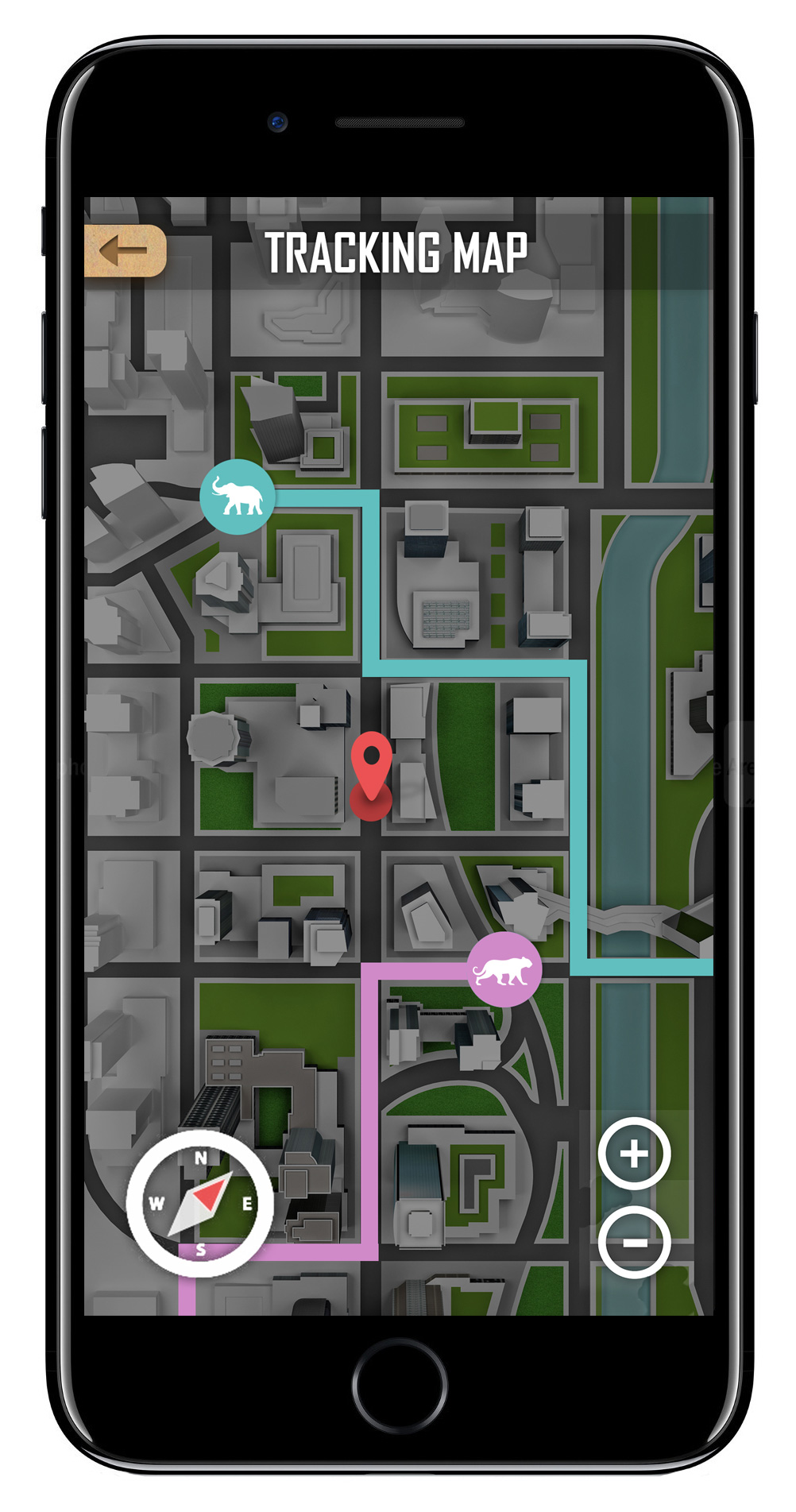- Video games that incorporate new data visualization technologies offer an alternative channel to communicate the ecology and the plight of wildlife to an otherwise untapped audience.
- An online game called Safari Central will combine real tracking data from animals in the wild with augmented reality, creating virtual avatars of these namesakes.
- Though still unproven, games also offer an unconventional business model to support wildlife conservation programs through small in-game purchases by a potentially huge audience.
As technology for data analysis and visualization improves, online gaming could turn out to be a valuable tool for conservation education, advocacy, and funding. Its role in promoting positive change for nature and humanity has been debated, and its potential in helping biodiversity conservation even formally researched. However, this potential has not yet been fully realized, despite games’ global popularity.
The games market is enormous: more than 2 billion people play video games worldwide. Newzoo’s latest Global Games Market Report estimates that game revenues reached nearly US $100 billion in 2016, mostly from digital games. The report expects mobile (smartphone and tablet) gaming alone to generate $46 billion in 2017.

In the United States, consumers spent more than $23 billion in 2015 on games, $16 billion in content alone, despite the relative low cost of digital games, which often cost less than $5. Over 150 million Americans play video games, yet fewer than one-third of adult millennials in a Pew Research Center survey considered themselves environmentalists.
Digital games and real nature
Astute citizen science fan Morgan Jackson saw the potential in the globally successful Pokémon Go game in getting people outdoors looking around their environment. Pokémon Go encourages players to find and collect computer-generated augmented reality (AR) figures (the Pokémon) that are superimposed into their smartphone camera views at specific places and in certain environments.
He developed #PokeBlitz, a Twitter hashtag that has connected players searching for the cartoon Pokémon who also encounter and photograph real wildlife with qualified experts who have identified these real animals.
Similarly, existing online apps, such as iSpot and iNaturalist, encourage users to post photo observations of animals and plants that the greater community helps to identify, with kudos given to those who respond and identify reliably.

A 2014 study of games’ potential for biodiversity conservation concluded that “there is great potential for conservation to take more advantage of digital games, provided that conservation games are developed in collaboration with game design specialists, have specific rather than general aims, target a specific and conservation-relevant audience, and (above all) are fun to play.”
Fun is key. Youth in America today are far more likely to spend leisure hours playing online or on their mobile phone than outdoors.
Merging high technology with human’s love of animals
For many people, the colorful, larger-than-life nature of cartoon Pokémon monsters are more exciting and accessible than real animals. Moreover, the data that wildlife scientists painstakingly collect on animal movements and behavior are generally accessible only in published scientific papers or short news articles, often years after they were collected.
To tap into the online games craze on behalf of wildlife, the Internet of Elephants (IoE) is creating games that combine AR technology, data analysis tools, and real animal tracking data with the animals’ personal stories and the active participation inherent in games to engage this hitherto untapped audience.
Lola, on the left, the real rhino from Kenya’s Ol Pejeta Conservancy, inspired the creation of Lola the augmented reality rhino, on the right. Video credit: Internet of Elephants
IoE’s first game, called Safari Central, maps out the movement data of the tagged wild animals in a player’s own city. AR experts created Safari Central’s virtual animals, which mimic real ones and allow players to follow the seasonal travel routes of their living namesakes, without having to leave their home town.
Similar to Pokémon Go, as a player, you try to locate the virtual location of one or more animals by physically moving to where they are, or where you anticipate they will be, and following clues that appear in the app. You can then spot and photograph the AR animated animals through the mobile phone app.

Unlike Pokémon, the AR animals move around based on the tracked movements of their counterparts in the wild. The better you understand how they move in the wild and how that relates to how they move in your city, the better you will get at knowing where to find them.
IoE’s objective in this and future games is to use data visualization technologies such as AR to bring to life the animal movement data contributed by scientists and, as Gautam Shah, founder of the IoE, said, “to connect millions of people currently not engaged in conservation with wildlife projects across the world.”
 |
 |
Players track movements of real animals, superimposed into their own city, and use clues to find them in the augmented reality mobile game, Safari Central. Image credits: Internet of Elephants
“Most people simply read about poaching epidemics or loss of habitat thousands of miles away from where it is actually happening,” explained Shah. “They react with sadness but rarely stay actively engaged or understand what is in their power to impact. Our intention is to change that through the use of interactive games and education that take advantage of already existing data on real wild animals.”
Naming the individual animals creates empathy for their well-being, as demonstrated by the outpouring of emotion and outrage regarding the death of Cecil the Lion.
In using games to introduce a huge audience to individual animals with personalities,” said Shah, “We see an opportunity to use [field] data to keep people more engaged with these same animals, to create a vested interest in their lives, and in the process generate publicity and revenues for the conservation organizations conducting the research.”
“This is just the first game. There are many other ways that the data can be used,” he added.
Lola the animated rhino can walk in and out of a laptop computer screen to meet her wild counterpart. Video credit: Internet of Elephants
IoE has developed the initial set of animated animals that will star in a preview app launching in August 2017. The preview app is free to explore, photograph, and “meet” the animals. The group is launching a crowdfunding campaign to fund the full Safari Central game, which is expected in mid-2018.
Fundraising potential
Developing and selling new commercial games could potentially generate huge returns from new conservation donors, but development requires specialized design and programming skills and marketing know-how that come at a high cost (US$1-$60 million, Kotaku 2014). Moreover, the market is extremely competitive, limiting the likelihood of success for a given new game.
Online games, which are often played by many users at once, can host markets for virtual goods and services that players purchase with real or virtual currency. Games may be able to raise funds through an invitation to make a charitable donation or through in-game purchases of virtual items that are useful for the game, such as clothing or accessories for a character to improve his or her chances for success.

In the case of Safari Central, a player may want to pay for clues on where the animal has been recently, with larger payments offering information on movement patterns that is more recent or over a longer period.
Another option would be the chance to chat with an expert on a given species or to learn enough about the species to build a following and offer clues on where one might find it.
Players could even pay to customize the spatial scale of their experience, from the expert version of the game that covers the hundreds of hectares of a given animal’s movements to a condensed version that fits the movement patterns within a neighborhood park for children or for a specific event.
A potential downside of this approach is if the purchase suggestions interrupt play or generate funds without transparency of what they will be supporting. IoE partners with several conservation groups that study and monitor the various tagged animals. These and other groups that contribute tracking data receive donations from the in-game purchases players make on behalf of their respective animals.

Can tech make learning fun and inspire change?
Games and other applications that encourage participation have been used as alternative teaching tools.
A small but growing cadre of ‘serious’ games encourage learning about real-world issues, promoting positive change, and consequences of decision-making under various scenarios.
Schools are increasingly using games for teaching: a survey of school teachers found that in 2015, 48 percent used games in the classroom, an increase from the 23 percent that said they did so in 2010. Environmentally oriented games exist that challenge kids to clean up a city, find lost animals, or protect baby tortoises.
“Games are great at immersing the user into the experience because s/he participates in, and not just watches, the action,” said IoE’s Shah in an interview with Mongabay-Wildtech.
Nevertheless, he continued, “It’s your choice whether you want to be educated or not….You’re playing the game because it’s an awesome game, not because you’re trying to do good. The do-good is an added bonus.”


Several conservation groups have developed nature-themed games for kids to promote ecological and conservation awareness, without commercial expectation, including:
- Defenders of Wildlife Kids’ Planet
- National Wildlife Federation’s Games for Kids
- Worldwide Fund for Nature games and apps
- Public Broadcasting Systems Wild Kratts
- Science Game Center’s games for schools
Despite admiration for several of these games and various citizen science efforts, such as Snapshot Serengeti, Shah lamented that conservation-inspired games have not seen commercial success. “Other non-conservation-related commercial games are who we are really competing against.”
“With the right mechanism for hooking and engaging the audience, we believe we can multiply the number of wildlife enthusiasts around the world, and at the minimum provide new, fun ways to be entertained while contributing to wildlife conservation at the same time,” Shah said.
